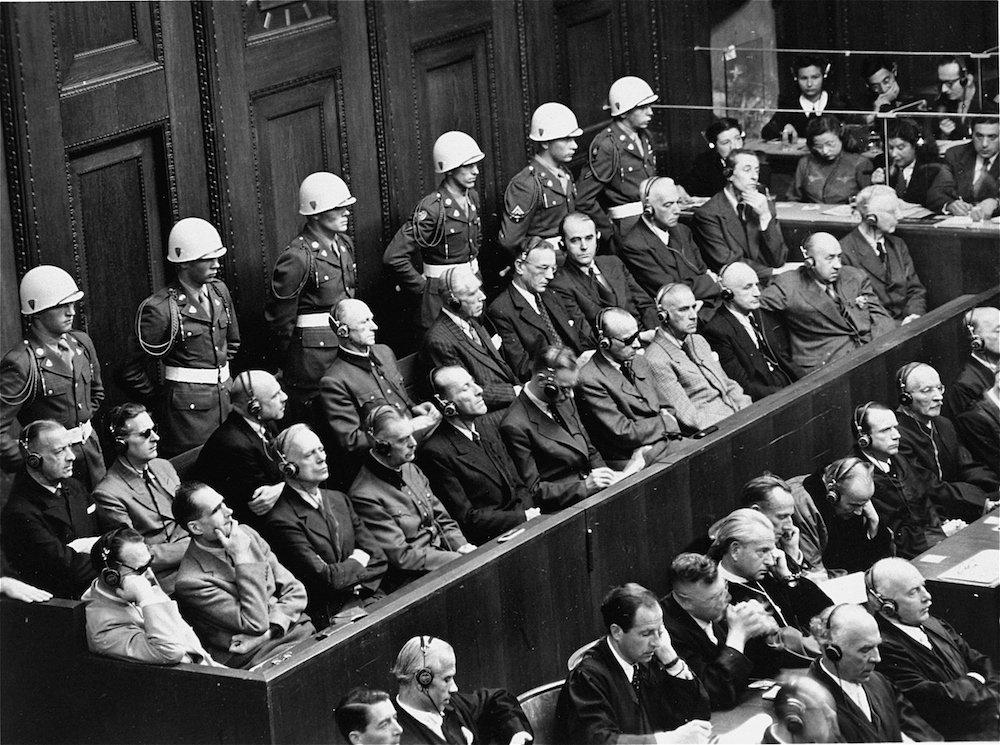by Fiona Gardner

Stephen suggested that further analytic thought might contribute more to the discussion on Christ Church and dysfunctional group dynamics. Here are a few thoughts – taken from my book shelf.
It was the psychologist Carl Jung who said that if you want to lose your identity – join a group. He also wrote that the group experience takes place at a lower level of consciousness than the experience of an individual. Communal singing can work like this – the choir or congregation feels as if one, uplifted together, even if singing words that might not ring true or make sense to each individual member. In a group we escape from ourselves when our sense of security is increased and the sense of responsibility is decreased – it becomes what Jung calls a mass mentality which of course can be benign or malign (there are plenty of examples that come to mind), or a healthy mixture. And for each person in the group there is a heightened suggestibility and what Jung calls a suggestive group spirit (he refers at one point to the example of the confessions of the Oxford Movement) where the favourable social effects are experienced at the expense of the moral and mental independence of the individual. In the group our discriminative capacity is decreased: ‘one becomes braver, more presumptuous, more cocky, more insolent, more reckless; but the self is diminished and … individual judgement.’ This levelling down can be compensated by one person who emerges as ‘The Leader’ of the group spirit. This means that prestige and power conflicts keep arising: ‘social egocentricity increases in proportion to the numerical strength of the group’.
Regular readers of this blog are well up to speed with the various attempts to apparently ‘oust’ Martyn Percy from his position as Dean of Christ Church, Oxford from 2018 up to the present. In a letter circulated to members of General Synod of the Church of England in June 2020, the authors, lawyers Martin Sewell and David Lamming wrote how whilst the process was not transparent – ‘the only transparency is the motivation’. Whilst the motivation may be clear, there are murky and obscure processes going on in terms of group dynamics. David Lamming commenting on the Independent Review published on 11th March sees conflict of interests and loyalty as part of this. The Governing Body is a large group – over 60 (it looks like 41 involved in recent actions – so to return to Jung’s phrase ‘social egocentricity’ is pretty high which may help to explain the reluctance to reflect on what the group is doing. Jung put it like this: ‘When a hundred intelligent heads are united in a group the result is one big fathead’.
This is where Wilfred Bion might also offer clarity. Stephen referred the surviving church readership to Bion’s work on groups, and although Bion died in 1979 both his work on what happens in groups, and his work with individual patients are still held in high regard. His theory is based on what he discovered in his work managing a rehabilitation unit for psychiatric patients in the British Army during World War II, and later with small groups at the Tavistock Clinic. As Stephen and follow up commentators have stated the central idea in Bion’s theory is that in every group, two groups exist: the ‘work group’ and the ‘basic assumption group’. Bion was not referring to factions or subgroups within the group, but rather to two dimensions of behaviour within the group.
The work group is that element of group functioning that is concerned with the primary task or work of the group: which in this case would be governing Christ Church to the best of the group’s ability. The mature work group is aware of its purpose and can define its task. Its members work cooperatively as separate and discrete members who willingly choose to belong to the group because they identify with interests of the group. This group tests its conclusions, seeks knowledge, and learns from its experience. Bion notes that this level of maturity in the work group is very rare.
One of the defining characteristics of the emotional life of the Christ Church Governing Body would appear to be its inability to learn from previous experience. So, why would the Governing Body employ ineffective and self-contradicting behaviour that lessens the effectiveness of the work group? Why would it compulsively repeat this? Bion suggests that this is because in addition to the work group, the basic assumption group is strongly at play. The basic assumption group can be thought of as the ‘as if’ group, meaning that the group behaves ‘as if” certain tacit assumptions were held by the members. These assumptions are hidden in the group subconscious, outside the awareness of group members. The type of basic assumption group that fits best with the reported behaviour at Christ Church is the fight-flight group which assumes that it must preserve itself at all costs, and that this can be done only by fighting or fleeing from someone or something. The group has no tolerance for weakness and expects casualties since salvation of the group is more important than the needs of individual members. The fight-flight leader must inspire great courage and self-sacrifice, and lead the group against a common enemy. If none exists, an enemy will be created. A leader who fails to afford the group the opportunity for retreat or attack will be considered ineffective and ultimately ignored. When scapegoating (such as might be considered against Martyn Percy) occurs within a group dynamic, it is possible that the fight-flight assumption is largely at play. Members bond together to fight a common foe, the scapegoat, resulting in the majority of the group sharing a sense of purpose and ‘groupness’ often for the first time. One interesting aspect is the power of group mentality and the uneasiness experienced by individual members unless they are conforming to this underlying basic assumption.
When the rational group process is corrupted – as in this situation – then it means that there are powerful emotional states pushing judgement into second place. In other words, things are not seen clearly and there is no chance of learning from experience. Might it be possible that the arrival of and suggested policies changes made by Martyn Percy have created a feeling of being under threat – a somewhat paranoid basic assumption group where the fear is of change and the survival of the institution. Bion found that the basic assumption group offers a feeling of increased vitality; it also rejects that there are any difficulties – especially psychological difficulties or it offers a means of avoiding difficulties by focusing instead on the enemy. So, there is an excitement engendered by the basic assumption group, an excitement far removed from the usual dull meetings with agenda, procedures and points of order. Bion wrote of ‘This longed for alternative to the group procedure’. It’s exciting because it is fuelled by heightened emotions such as anxiety, fear, hatred and love – all contributing to the basic assumption. Under threat the basic assumption group might turn to the group history, using tradition and how things have been to protect the group in its struggle against the threat of having to accept an idea which might require individual progress and discomfort.
Each group member has to try and identify with either the basic assumption or the rational structure. It seems that a majority of the Governing Body are identifying with the basic assumption group and then would feel persecuted by what seems to them to be the arid intellectualism of the work group. Where basic assumptions become dangerous is when they are translated into action and again this is the pattern at Christ Church.
So, what might a group consultant suggest? If it was Bion he might use his idea of working on containment within a contained space where the powerful emotions could be held, processed and then communicated without everyone becoming overwhelmed by them. There then might be a restoration of the capacity to think sufficiently in each individual member of the body to refocus on the work group ethic. Or he might just see that the group has got stuck on the collective regressed level and see that any change at this point is a forlorn hope. Bion recognised that the fight-flight group has no concern for the welfare of the individual – as long as the group continues, and so will feel that any method of dealing with the group neurosis is opposed to the good of the group and will be rejected.








